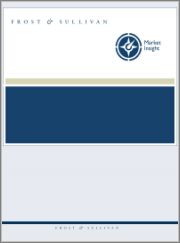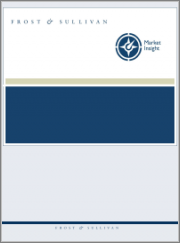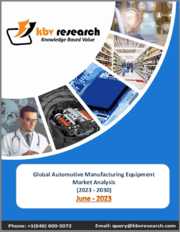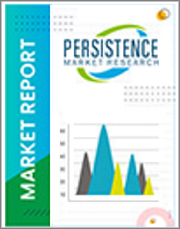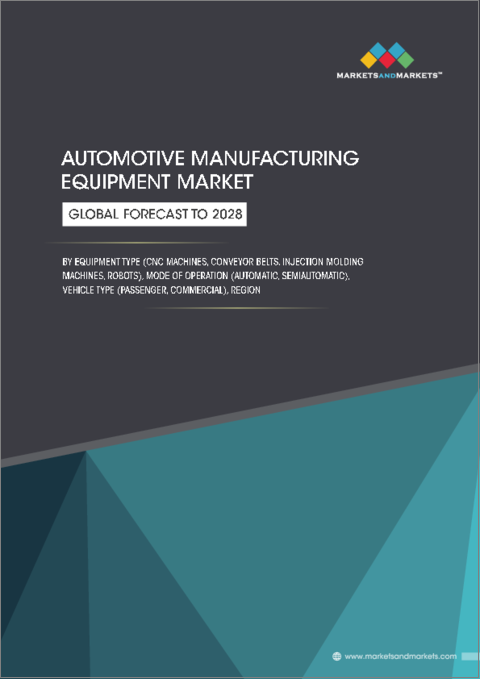
|
시장보고서
상품코드
1284051
세계의 자동차 재제조 시장 예측(-2028년) - 부품 유형별, 차량 유형별 및 지역별 분석Automotive Remanufacturing Market Forecasts to 2028 - Global Analysis By Part Type, Vehicle Type, and By Geography |
||||||
Stratistics MRC에 따르면, 세계 자동차 재제조 시장은 2022년 607억 8,000만 달러로 평가되었고, 2028년 1,193억 3,000만 달러에 달할 것으로 예상되며 예측 기간 동안 11.9%의 CAGR을 나타낼 것으로 예상됩니다.
자동차 재제조는 자동차 부품의 세척, 분해, 수리 및 교체를 통해 오래된 부품, 이전에 판매 된 부품 및 작동하지 않는 부품을 새로운 부품으로 바꾸는 표준화 된 산업 프로세스입니다.
국제에너지기구(IEA)에 따르면 2021년 전기차 판매량은 두 배로 증가하여 660만 대라는 새로운 기록을 세울 것입니다. 이에 따라 전기차 배터리, 타이어 등 전기차 리매뉴팩처링 부품에 대한 수요가 크게 늘어날 것으로 예상됩니다.
시장 역학 :
촉진요인
전기자동차 재제작 부품 수요
자동차의 전기화라는 세계 메가 트렌드로 인해 전기자동차의 재제조 부품에 대한 수요는 계속 높아지고 있으며, 이 시장은 빠르게 성장하고 있습니다. 이에 따라 타이어, 배터리 등 전기차 재제조 부품에 대한 수요가 크게 증가할 것으로 예상됩니다. 이에 따라 제조업체들은 전기차용 부품 재제조 및 재활용 솔루션 제공에 주력하고 있습니다. 이는 세계 자동차 재제조 산업의 성장에 영향을 미치는 몇 가지 트렌드다.
억제요인 :
자동차 재제조 부품에 대한 지식 부족
재제조된 자동차 부품은 새 제품만큼이나 우수합니다. 정부가 재제조 부품의 마케팅과 도입에 힘을 쏟지 않기 때문에 재제조 부품 분야의 잠재력이 과소평가되는 경우가 있습니다. 미개발 및 신흥국 고객들은 재제품의 경제적, 환경적 이점을 인식하지 못할 수 있으며, 이는 예측 기간 동안 시장 확대를 저해할 수 있습니다.
기회 :
자동차 부품 제조에 필요한 원자재 부족
원자재 부족은 계속 확대되고 있는 자동차 산업이 직면한 주요 과제 중 하나입니다. 자동차 제조업체들이 생산 능력을 강화함에 따라 원자재에 대한 필요성이 크게 증가하고 있습니다. 자동차 부품의 교체 수요 증가에 대응하기 위해 애프터마켓 사업자들은 다양한 지역에서 원자재 공급이 제한되어 있기 때문에 재제조 공정을 사용하도록 권장하고 있습니다. 이는 세계 시장 확대에 도움이 될 것으로 예상됩니다.
위협
불충분한 고객 인식 및 불리한 규제 관행
시장 성장을 저해하는 몇 가지 제약 조건으로는 재활용 및 수리된 차체 부품 공급업체와의 치열한 경쟁, 이 포트폴리오와 오리지널 제품과의 가격 차이 축소, 부품의 보증 기간 연장 등을 들 수 있습니다. 또한, 자동차 부품 재생 사업의 성장을 가로막는 문제로는 중고품과 유품을 구분하지 못하는 고객의 무지로 인해 중고품과 유품을 구분하지 못하는 문제도 있습니다. 특히 신흥국에서는 순정품의 60% 가격으로 구매할 수 있기 때문에 품질에 대한 소비자의 오해를 풀기가 쉽지 않습니다. 또한 인도를 비롯한 아시아 국가에서는 리매뉴팩처링에 필요한 부품인 코어의 수입이 불법으로 규정되어 있습니다. 이러한 요인들로 인해 이 분야의 확장이 크게 저해될 것으로 예상됩니다.
COVID-19의 영향 :
코로나19의 전염병으로 인해 세계 자동차 산업은 큰 영향을 받았습니다. 재제조 공장은 자원 부족으로 인해 가동이 중단되고 일시적으로 가동이 중단되어 시장이 침체되었습니다. 전염병은 심각한 원자재 부족을 일으켜 자동차 재 제조를 포함한 다양한 산업공급망 네트워크에 심각한 피해를 입혔습니다. 또한 전염병은 기업의 소득을 크게 감소시켜 전체 매출에 영향을 미쳤습니다. 현금 흐름 창출이 부족하여 현재 진행 중인 일부 제품 관련 연구 개발 프로그램을 보류할 수밖에 없었고, 그 결과 재제조 산업의 성장이 둔화되었습니다.
예측기간 동안 엔진 및 관련 부품 부문이 가장 큰 비중을 차지할 것으로 전망
엔진 및 관련 부품 분야는 세계적으로 IC 엔진이 탑재된 자동차의 보급이 확대됨에 따라 유리한 성장세를 보일 것으로 예상됩니다. 엔진 및 관련 부품은 마모와 손상에 더 취약합니다. 따라서 드라이브 벨트, 오일 필터, 에어 필터와 같은 부품은 다른 자동차 부품보다 정기적으로 교체해야 합니다. 소비자수요 증가에 대응하기 위해 대부분의 주요 애프터마켓 기업들은 엔진 관련 부품의 재생산에 주력하고 있습니다.
예측 기간 동안 가장 높은 CAGR을 기록할 것으로 예상되는 승용차 부문
승용차 부문은 예측 기간 동안 가장 빠른 CAGR로 성장할 것으로 예상됩니다. 이는 온로드 승용차 생산이 증가하면서 이 부문의 성장을 가속하고 있기 때문입니다. 또한, 자동차 판매량 증가와 세계 자동차 산업에서 전기 자동차의 보급이 증가함에 따라 향후 이 부문의 발전이 기대됩니다. 또한, 다양한 차종에 대응하는 재제조 부품에 대한 인지도가 높아지고 있어 향후 이 분야의 성장을 견인할 것으로 예상됩니다.
가장 높은 점유율을 보이는 지역
아시아태평양은 중국, 인도, 일본, 한국 등의 국가에서 자동차 생산량이 증가함에 따라 예측 기간 동안 가장 높은 점유율을 차지할 것으로 예상됩니다. 또한, 이 지역에는 많은 자동차 산업 OEM 제조업체가 존재하며, 효과적인 엔진 개발을 위한 연구개발에 많은 투자를 하고 있습니다.
CAGR이 가장 높은 지역 :
북미는 미국에 선도적인 기업이 존재하고 자동차 애프터마켓이 형성되어 있어 예측 기간 동안 가장 높은 CAGR을 기록할 것으로 예상됩니다. 또한, 북미는 전기자동차의 보급이 확대되고 있어 향후 몇 년 동안 수익 확대의 기회가 될 것으로 예상됩니다. 이러한 상황은 전기차 재제조 솔루션에 대한 수요를 증가시켜 시장 확대에 박차를 가하고 있습니다.
주요 발전 :
2023년 5월, 보쉬 엔지니어링과 리제오토모티브는 수소 엔진 탑재 고성능 자동차에 대한 전략적 개발 파트너십을 체결하고, 프로젝트의 목표는 기존 가솔린 엔진 탑재 스포츠카와 동등한 구동력을 가진 수소 엔진 탑재 고성능 자동차를 만드는 것입니다. 만드는 것입니다.
2023년 5월, 볼그워너는 인디애나폴리스 모터 스피드웨이와 공동 브랜드인 볼그워너 트로피(R) 상품을 출시하고, 상품 판매는 레전드 소매점에서 독점적으로 판매합니다.
2023년 4월, 보쉬가 실리콘 카바이드 칩으로 반도체 사업을 확장합니다. 이 기술 회사는 캘리포니아 주 로즈빌에 본사를 둔 미국 칩 제조업체 TSI 반도체의 자산을 인수할 계획입니다.
우리 보고서가 제공하는 것들
- 지역별, 국가별 시장 점유율 평가
- 신규 진입기업에 대한 전략적 제안
- 2020년, 2021년, 2022년, 2025년, 2028년 시장 데이터를 포함합니다.
- 시장 동향(시장 성장 촉진요인 및 저해요인, 기회, 위협, 과제, 투자 기회, 권장 사항).
- 시장 추정에 기반한 주요 사업 부문의 전략적 제안
- 주요 공통 트렌드를 매핑한 경쟁 구도.
- 상세한 전략, 재무 및 최근 개발 현황을 포함한 기업 프로파일
- 최신 기술 발전을 매핑하는 공급망 동향
무료 맞춤형 서비스 제공:
이 보고서를 구매한 고객에게는 다음과 같은 무료 맞춤화 옵션 중 하나를 제공합니다.
- 기업 프로파일
- 추가 시장 기업의 종합적인 프로파일링(최대 3개사)
- 주요 기업의 SWOT 분석(최대 3개사)
- 지역별 세분화
- 고객의 요청에 따라 주요 국가 시장 추정, 예측, CAGR(주: 타당성 검토에 따라 다름)
- 경쟁사 벤치마킹
- 제품 포트폴리오, 지역적 입지, 전략적 제휴를 기반으로 한 주요 기업 벤치마킹
목차
제1장 주요 요약
제2장 서문
- 개요
- 이해관계자
- 조사 범위
- 조사 방법
- 데이터 마이닝
- 데이터 분석
- 데이터 검증
- 조사 접근
- 조사 소스
- 1차 조사 소스
- 2차 조사 소스
- 가정
제3장 시장 동향 분석
- 성장 촉진요인
- 성장 억제요인
- 기회
- 위협
- 신흥 시장
- 신형 코로나바이러스(COVID-19)의 영향
제4장 Porter의 Five Forces 분석
- 공급 기업의 교섭력
- 바이어의 교섭력
- 대체품의 위협
- 신규 진출업체의 위협
- 경쟁 기업간 경쟁 관계
제5장 세계의 자동차 재제조 시장 : 부품 유형별
- 변속기 부품
- 전기 및 전자 시스템 부품
- 엔진 및 관련 부품
- 휠&서스펜션 관련 부품
- 브레이크 시스템 관련 부품
- 기타 부품 유형
제6장 세계의 자동차 재제조 시장 : 차량 유형별
- 승용차
- 상용차
제7장 세계의 자동차 재제조 시장 : 지역별
- 북미
- 미국
- 캐나다
- 멕시코
- 유럽
- 독일
- 영국
- 이탈리아
- 프랑스
- 스페인
- 기타 유럽
- 아시아태평양
- 일본
- 중국
- 인도
- 호주
- 뉴질랜드
- 한국
- 기타 아시아태평양
- 남미
- 아르헨티나
- 브라질
- 칠레
- 기타 남미
- 중동 및 아프리카
- 사우디아라비아
- 아랍에미리트(UAE)
- 카타르
- 남아프리카공화국
- 기타 중동 및 아프리카
제8장 주요 발전
- 계약/파트너십/협업/합작투자(JV)
- 인수 및 합병
- 신제품 발매
- 사업 확대
- 기타 주요 전략
제9장 기업 개요
- Robert Bosch GmbH
- BorgWarner Inc
- ZF Friedrichshafen AG
- Valeo
- ATC Drivetrain
- CARDONE Industries
- Caterpillar
- BBB Industries
- Carwood Group
- Meritor Inc
- Monark Automotive GmbH
- Genuine Parts Company
- Maval Manufacturing Inc
- Teamec BVBA
- Jasper Engines
According to Stratistics MRC, the Global Automotive Remanufacturing Market is accounted for $60.78 billion in 2022 and is expected to reach $119.33 billion by 2028 growing at a CAGR of 11.9% during the forecast period. Through cleaning, disassembly, repair, and replacement of worn-out or non-functional automobile components, automotive remanufacturing is a standardised industrial process that turns outdated, previously sold, non-functional parts into brand-new ones.
According to the International Energy Agency (IEA), EV sales doubled in 2021 to a new record of 6.6 million units. This factor is expected to generate significant demand for remanufactured EV parts such as EV batteries, tires, and other components.
Market Dynamics:
Driver:
Electric vehicle need for remanufactured parts
This market is expanding quickly as the demand for remanufactured auto components for electric cars is kept high by the worldwide megatrend of automotive electrification. This element is anticipated to significantly increase demand for remanufactured EV parts, including tyres, batteries, and other components. To seize early revenue growth prospects, manufacturers are concentrating on offering automotive remanufacturing and recycling solutions for electric vehicle parts. These are a few of the trends influencing the growth of the global automobile remanufacturing industry.
Restraint:
Lack of knowledge about remanufactured automotive parts
Auto parts that have been remanufactured are just as excellent as new ones. Due to the government's lack of efforts in marketing and implementing remanufactured goods, the potential of the sector for remanufactured components is sometimes underestimated. Customers in undeveloped and developing economies may not be aware of the economic and environmental advantages of remanufactured products, which might impede the market's expansion over the projection period.
Opportunity:
Lack of raw materials needed to make automotive components
Lack of raw materials has been one of the main challenges facing the continuously expanding automobile sector. As automakers increase their manufacturing capacity, the need for raw materials has increased significantly. To meet the rising demand for car part replacement, aftermarket businesses are being encouraged to use remanufacturing processes due to the restricted supply of raw materials in diverse geographic areas. This will boost expansion in the worldwide market.
Threat:
Inadequate customer recognition and unfavourable regulatory practises
A few constraints limiting market growth include fierce competition from suppliers of recycled and repaired vehicle body parts, dwindling pricing disparities between this portfolio and the original goods, and longer warranty on components. Another problem impeding the growth of the automobile parts remanufacturing business is customer ignorance of the distinctions between used and remains items due to erroneous language connotations. In particular in emerging markets, suppliers find it challenging to dispel consumer misunderstandings about the product quality due to the product's availability for 60% of the original equipment price. Along with these requirements, several Asian nations, notably India, have made it illegal to import cores, which are a necessary component for remanufacturers. The expansion of the sector is predicted to be significantly hampered by these factors
COVID-19 Impact:
The worldwide automobile sector was significantly impacted by the COVID-19 epidemic. Remanufacturing factories were unable to operate at full capacity because of a lack of resources, which led to a temporary shutdown of those operations and a slowdown in the market. The pandemic caused a severe lack of raw materials and severely damaged the supply chain networks in many different industries, including the remanufacturing of automobiles. Additionally, the epidemic severely reduced income for businesses and had an effect on their entire sales. Due to insufficient cash flow creation, several ongoing product-related R&D programmes had to be placed on hold, which resulted in the remanufacturing industry's growth slowing down.
The engine & related parts segment is expected to be the largest during the forecast period
The engine & related parts segment is estimated to have a lucrative growth, due vehicles using IC engines are currently widely offered globally. Engine and associated parts are more vulnerable to wear and damage. This is why elements like drive belts, oil filters, and air filters need to be changed more regularly than other automobile components. To meet the rising demand from consumers, the majority of the major aftermarket firms are concentrating on remanufacturing engine-related parts.
The passenger cars segment is expected to have the highest CAGR during the forecast period
The passenger cars segment is anticipated to witness the fastest CAGR growth during the forecast period, due to the increasing on-road passenger car production is propelling the segment's growth. Future category development is also predicted to be boosted by rising automobile sales and the use of EVs in the global automotive industry. Remanufactured components that are compatible with a variety of cars are becoming more widely known about, and this is expected to fuel segment expansion in the years to come.
Region with highest share:
Asia Pacific is projected to hold the highest market share during the forecast period owing to the increased vehicle production in nations like China, India, Japan, and South Korea is to blame for this. Additionally, the area is home to a number of Original Equipment Manufacturers (OEMs) for the automobile industry that is heavily invested in R&D for the creation of effective engines.
Region with highest CAGR:
North America is projected to have the highest CAGR over the forecast period, owing to the presence of top companies and well-established automotive aftermarkets in the US. Additionally, North America's growing use of electric cars is in the upcoming years, predicted to produce profitable chances for revenue development. This situation has raised the need for EV remanufacturing solutions, which is further fueling market expansion.
Key players in the market:
Some of the key players profiled in the Automotive Remanufacturing Market include Robert Bosch GmbH, BorgWarner Inc, ZF Friedrichshafen AG, Valeo, ATC Drivetrain, CARDONE Industries, Caterpillar, BBB Industries, Carwood Group, Meritor Inc, Monark Automotive GmbH, Genuine Parts Company, Maval Manufacturing Inc, Teamec BVBA and Jasper Engines
Key Developments:
In May 2023, Bosch Engineering and Ligier Automotive establish strategic development partnership for high-performance vehicles with a hydrogen engine, the goal of the project is to build a high-performance vehicle with a hydrogen engine that delivers drive dynamics equivalent to those of conventional gasoline-powered sports cars.
In May 2023, BorgWarner Launches Exclusive Co-Branded Borg-Warner Trophy® Merchandise with Indianapolis Motor Speedway, Merchandise exclusively available through Legends retail operations.
In April 2023, Bosch is expanding its semiconductor business with silicon carbide chips. The technology company plans to acquire assets of the U.S. chipmaker TSI Semiconductors, based in Roseville, California.
Part Types Covered:
- Transmission Parts
- Electrical & Electronics System Parts
- Engine & Related Parts
- Wheel & Suspension System Related Parts
- Braking System Related Parts
- Other Part Types
Vehicle Types Covered:
- Passenger Cars
- Commercial Vehicles
Regions Covered:
- North America
- US
- Canada
- Mexico
- Europe
- Germany
- UK
- Italy
- France
- Spain
- Rest of Europe
- Asia Pacific
- Japan
- China
- India
- Australia
- New Zealand
- South Korea
- Rest of Asia Pacific
- South America
- Argentina
- Brazil
- Chile
- Rest of South America
- Middle East & Africa
- Saudi Arabia
- UAE
- Qatar
- South Africa
- Rest of Middle East & Africa
What our report offers:
- Market share assessments for the regional and country-level segments
- Strategic recommendations for the new entrants
- Covers Market data for the years 2020, 2021, 2022, 2025, and 2028
- Market Trends (Drivers, Constraints, Opportunities, Threats, Challenges, Investment Opportunities, and recommendations)
- Strategic recommendations in key business segments based on the market estimations
- Competitive landscaping mapping the key common trends
- Company profiling with detailed strategies, financials, and recent developments
- Supply chain trends mapping the latest technological advancements
Free Customization Offerings:
All the customers of this report will be entitled to receive one of the following free customization options:
- Company Profiling
- Comprehensive profiling of additional market players (up to 3)
- SWOT Analysis of key players (up to 3)
- Regional Segmentation
- Market estimations, Forecasts and CAGR of any prominent country as per the client's interest (Note: Depends on feasibility check)
- Competitive Benchmarking
- Benchmarking of key players based on product portfolio, geographical presence, and strategic alliances
Table of Contents
1 Executive Summary
2 Preface
- 2.1 Abstract
- 2.2 Stake Holders
- 2.3 Research Scope
- 2.4 Research Methodology
- 2.4.1 Data Mining
- 2.4.2 Data Analysis
- 2.4.3 Data Validation
- 2.4.4 Research Approach
- 2.5 Research Sources
- 2.5.1 Primary Research Sources
- 2.5.2 Secondary Research Sources
- 2.5.3 Assumptions
3 Market Trend Analysis
- 3.1 Introduction
- 3.2 Drivers
- 3.3 Restraints
- 3.4 Opportunities
- 3.5 Threats
- 3.6 Emerging Markets
- 3.7 Impact of Covid-19
4 Porters Five Force Analysis
- 4.1 Bargaining power of suppliers
- 4.2 Bargaining power of buyers
- 4.3 Threat of substitutes
- 4.4 Threat of new entrants
- 4.5 Competitive rivalry
5 Global Automotive Remanufacturing Market, By Part Type
- 5.1 Introduction
- 5.2 Transmission Parts
- 5.3 Electrical & Electronics System Parts
- 5.4 Engine & Related Parts
- 5.5 Wheel & Suspension System Related Parts
- 5.6 Braking System Related Parts
- 5.7 Other Part Types
6 Global Automotive Remanufacturing Market, By Vehicle Type
- 6.1 Introduction
- 6.2 Passenger Cars
- 6.3 Commercial Vehicles
7 Global Automotive Remanufacturing Market, By Geography
- 7.1 Introduction
- 7.2 North America
- 7.2.1 US
- 7.2.2 Canada
- 7.2.3 Mexico
- 7.3 Europe
- 7.3.1 Germany
- 7.3.2 UK
- 7.3.3 Italy
- 7.3.4 France
- 7.3.5 Spain
- 7.3.6 Rest of Europe
- 7.4 Asia Pacific
- 7.4.1 Japan
- 7.4.2 China
- 7.4.3 India
- 7.4.4 Australia
- 7.4.5 New Zealand
- 7.4.6 South Korea
- 7.4.7 Rest of Asia Pacific
- 7.5 South America
- 7.5.1 Argentina
- 7.5.2 Brazil
- 7.5.3 Chile
- 7.5.4 Rest of South America
- 7.6 Middle East & Africa
- 7.6.1 Saudi Arabia
- 7.6.2 UAE
- 7.6.3 Qatar
- 7.6.4 South Africa
- 7.6.5 Rest of Middle East & Africa
8 Key Developments
- 8.1 Agreements, Partnerships, Collaborations and Joint Ventures
- 8.2 Acquisitions & Mergers
- 8.3 New Product Launch
- 8.4 Expansions
- 8.5 Other Key Strategies
9 Company Profiling
- 9.1 Robert Bosch GmbH
- 9.2 BorgWarner Inc
- 9.3 ZF Friedrichshafen AG
- 9.4 Valeo
- 9.5 ATC Drivetrain
- 9.6 CARDONE Industries
- 9.7 Caterpillar
- 9.8 BBB Industries
- 9.9 Carwood Group
- 9.10 Meritor Inc
- 9.11 Monark Automotive GmbH
- 9.12 Genuine Parts Company
- 9.13 Maval Manufacturing Inc
- 9.14 Teamec BVBA
- 9.15 Jasper Engines











